
Choosing what type of tea to drink can get a little overwhelming the first time. There are so many types of tea that it might seem complicated. It doesn’t have to be, though. Each type of tea is distinct in taste, smell, and other factors. To learn more about the types of tea, then read on for a guide on each one!
What is tea?
Tea is a type of caffeinated drink made from the Camellia sinensis plant’s leaves. Other names of the Camellia sinensis include “tea plant,” “tea shrub,” and “tea tree.” Some might confuse Camellia sinensis with the source of tea tree oil, but that’s a different tree from New Zealand.
Camellia sinensis is native to East and Southeast Asia and the Indian Subcontinent. However, it grows in different countries around the world now. The leaves of this plant are used to make not just one type of tea, but all of them. The types of tea all depend on how the leaves of C. sinensis are processed.
You might wonder, “how can a single plant produce all of those types of tea I see at the grocery store?” Well, there are actually only six (some say five!) “true” types of tea. Teas from other types of plants, flowers, and mushrooms aren’t traditional teas. People call them herbal teas.
Some people can be strict about the difference between the two. Still, herbal teas are just as popular as traditional types of teas, so people consider them to be one and the same.
Why drink tea in the first place?
It is common knowledge that drinking tea is good for you. However, most people don’t know what these health benefits actually are.
First, most tea has antioxidant properties, which reduce the risk of diabetes, obesity, and high cholesterol. This also helps with weight loss. Drinking tea also improves your heart‘s health. This reduces your risk of heart attacks and strokes. Aside from vitamins, some teas also contain calcium. This improves bone health. Each type has its own health benefits, of course, which are covered in the list below.
All types of tea and herbal tea are healthy and delicious. It all depends on what your cup of tea is or not. Literally!
Basic Types Of Tea
1. Black Tea
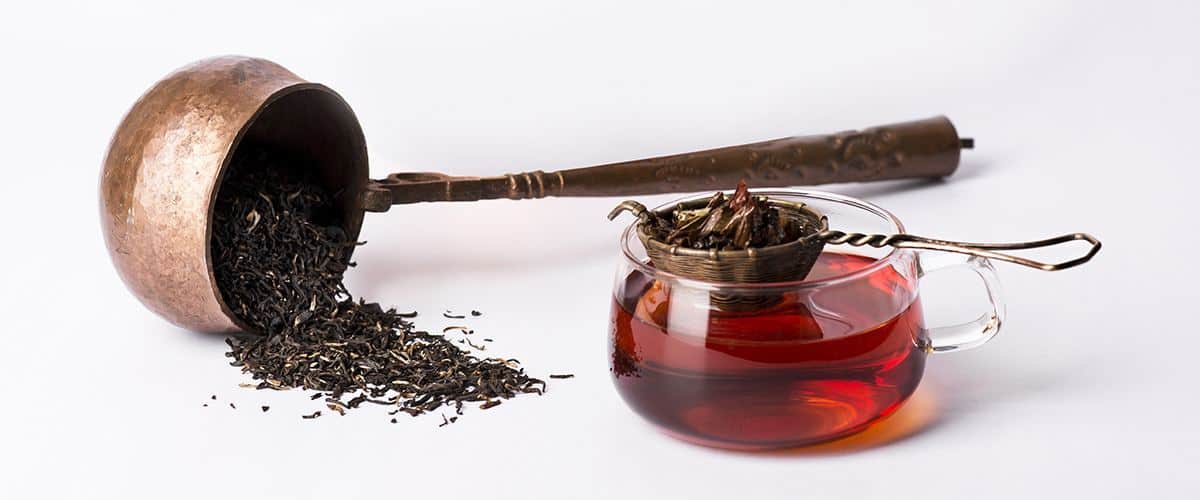
Black tea is easy to find in cafes and grocery stores. In some countries like China, they call black tea “red tea” instead. This type of tea has a dark, copper color, hence its name. Black tea is much more caffeinated than other types of tea, which gives it a stronger flavor. However, its caffeine content still depends on how you brew and blend it.
Some popular types of black tea include Assam, Darjeeling Black tea, and Earl Grey tea. Because of its high caffeine content, it is a popular breakfast drink. Some common breakfast blends include English Breakfast and Irish Breakfast.
Popular Types of Black Tea
Assam Tea
The name, “Assam,” comes from its place of origin: Assam, India. A type of the C. sinensis plant is native to this region. This makes Assam tea a little different from other black teas. In fact, India only started producing this type of tea around 200 years ago.
Assam tea has a strong malty flavor. Because of this, people often use it as a base for mixing other ingredients like chocolate or other types of tea. It is important to note that Assam tea has more caffeine than most black teas. This makes it a popular breakfast drink, so if you need a pick-me-up in the morning, consider drinking Assam tea.
Other health benefits of Assam tea include lowering your blood sugar and promoting weight loss.
Darjeeling Tea
The Darjeeling tea is from the Darjeeling District in West Bengal, India. Tea experts often classify Darjeeling as a type of black tea. However, it is less oxidized. Plus, the flavors are much more complex with green tones because of where it is produced. What truly sets Darjeeling tea apart from the other types of tea is how farmers harvest its plant. Farmers harvest Darjeeling district’s C. sinensis plant five times a year. Each harvest produces Darjeeling teas that look and taste different from other harvests in the year.
Others call this tea the “Champagne of teas.” This is because Darjeeling tea tastes more like wine, specifically muscat wine, than tea. It still depends on how you brew your tea, but you can expect Darjeeling to taste very different from your usual cup of black tea.
Plenty of people drink Darjeeling tea for health benefits like reducing stress. Plus, it is high in antioxidants. This helps the body flush out any toxins and aid in digestion.
Earl Grey Tea
Earl Grey tea is a popular breakfast blend using black tea with a mix of Bergamot essential oil. To add Bergamot, the teamaker can simply blend the base tea with the Bergamot extract. They can also spray or coat the base tea with the oil. Usually, people use black tea as the base tea. However, these days, people also use Ceylon tea from Sri Lanka.
Despite popular belief, Earl Grey tea did not originate from England. This blend originated in China, but Western tea masters and enthusiasts popularized it.
Some health benefits of drinking Earl Grey tea include lowering your blood pressure and cholesterol. Furthermore, it also helps with weight loss.
2. Green Tea
Out of the traditional types of tea, green tea might be the most popular. Green tea leaves produce a light green or yellow drink. Green tea contains less caffeine than black tea. Thus, it tastes less intense.
You’ll find that most green teas are from China and Japan. However, both countries have different versions of green tea. In Japan, they steam green teas right after harvest. This allows oxidation to stop, giving the green tea a much more savory flavor. In China, they pan-fire tea leaves in order to stop the oxidation process. This gives Chinese tea a less intense flavor than Japanese green teas.
Popular types of green tea include Matcha tea, Gunpowder tea, and Longjing tea.
3. Oolong Tea
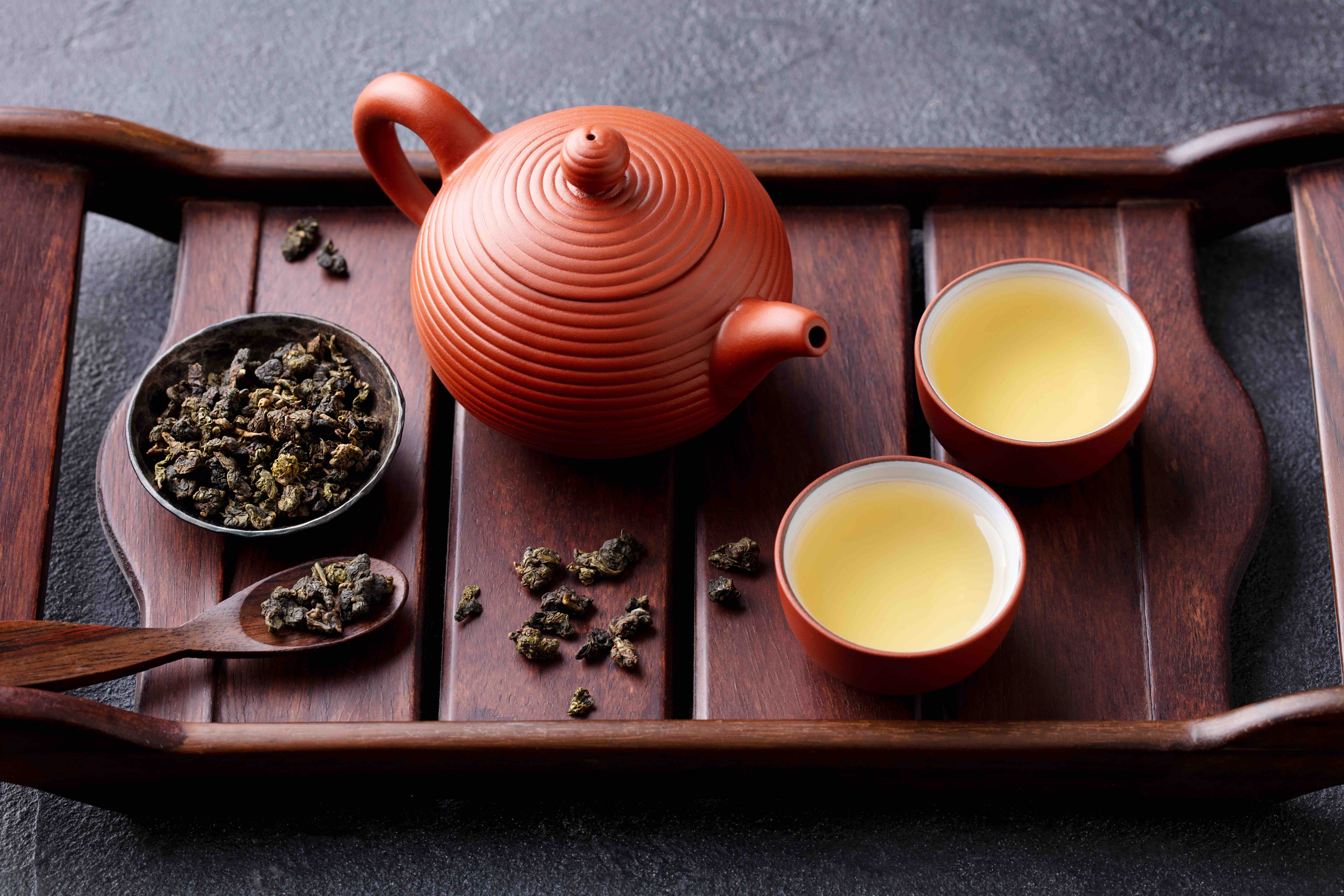
Compared to the first two types of tea, oolong tea is a bit more complicated. Oolong tea, or “Wulong tea,” is partially oxidized tea. Some see it as the midpoint between green and black tea. However, what truly sets oolong tea from the other types of tea is that it goes through a much more elaborate process.
Oolong tea leaves go through it all: withering, shaking, pan-firing, rolling, drying, and baking. They vary in oxidation levels, so their colors range from a light yellow to a darker red. Thus, its taste also varies depending on your particular brew.
You’ll find most oolong teas are from China and Taiwan. Popular brews of the oolong tea include Milk Oolong, Ti Kuan Yin, and Dan Cong or “Phoenix Tea.”
4. White Tea
While oolong tea has a lengthy transformation process, white tea is the opposite of that. It is not pan-fired, oxidized, or shaped. Instead, its sole process is drying until it loses the right amount of moisture. It is also less caffeinated than most types of teas.
Some white teas taste fruity while others can taste nutty or even spicy. Because of its simple drying process, there are only three types of white tea: Bai Hao Yin Zhen, or “Silver Needles,” Bai Mu Dan, or “White Peony,” and Shou Mei.
5. Puer tea
Puer tea, sometimes “Pu-erh tea,” isn’t defined by how its tea leaves are processed. Rather, its location sets it apart from the others. Puer tea is a type of tea that comes from the Yunnan province of China.
There are two types of puer tea: Sheng puer and Shou puer. Sheng puer uses a traditional fermentation process. Thus, they take longer to age. On the other hand, Shou puer uses a modern approach. Both types take up to years to ferment.
Puer tea tastes like black tea. They also have the same dark color. Furthermore, puer tea also has high caffeine content, equal to half of a cup of coffee.
6. Yellow Tea
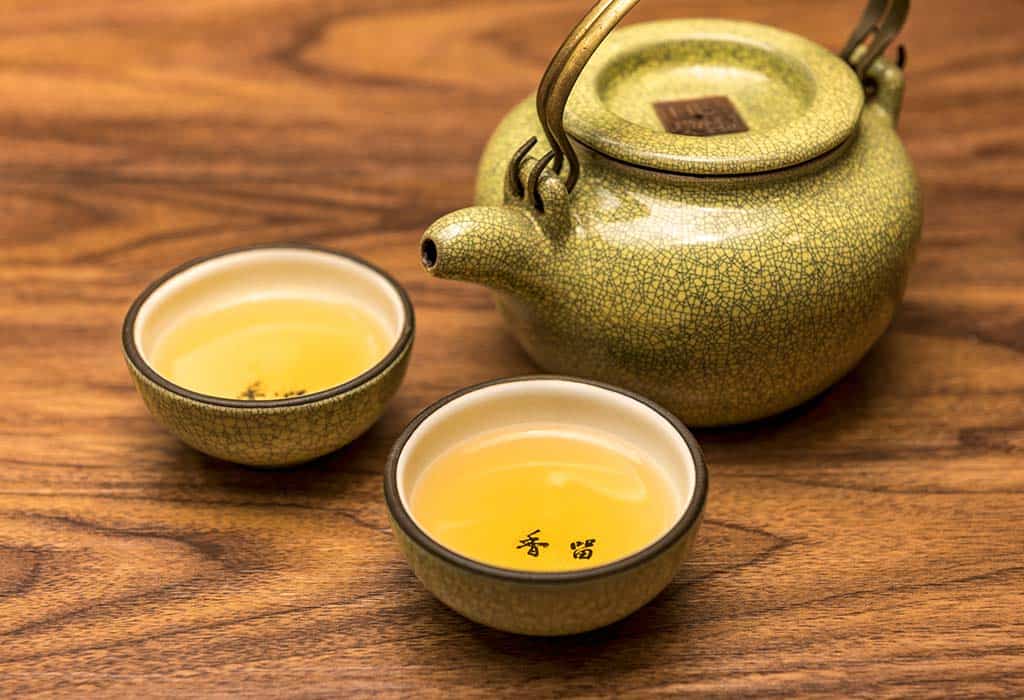
The last of the types of traditional tea is yellow tea. Most tea sommeliers don’t bother mentioning yellow tea because it is not as common as the others.
However, the process of yellow tea and the process of green tea are actually the same. Yellow tea just has an extra step. The tea maker has to wrap the yellow tea in a piece of cloth. While wrapped, the tea leaves oxidize again. This makes it taste less mild than most oxidized teas. Some also call this wrapping process “heaping” or “yellowing.”
7. Purple Tea
Now, this type of tea isn’t as popular as the others, so many don’t include this on their lists. This is because it is still relatively new.
This recent addition to the types of tea is purple tea. Like other types of tea, purple tea comes from the C. sinensis plant. However, purple tea specifically comes from a type of C. sinensis plant from the Nandi Hills of Kenya. There, these tea plants grow between 4,500 and 7,500 feet high. The high altitude causes the plants to produce high levels of antioxidants and turn purple.
As you would expect, the tea plant brews a purplish drink. Purple tea is sweet with hints of a woody flavor. It tastes a lot like sweeter green tea.
Aside from having less caffeine, purple tea is also anti-inflammatory and antiviral. Plus, it improves heart health and brain health. If you’re looking for a sweeter alternative to green tea, then why not try out purple tea?
Types of Herbal Tea
8. Barley Tea
Barley tea comes from roasted barley. It tastes slightly bitter with a toasty flavor. Its color is light copper. Many enjoy drinking barley tea cold, while some prefer it hot. Either way, barley tea is popular in Japan, South Korea, Taiwan, and China.
Because of its health benefits, barley tea is often used in traditional medicine. Some will drink it to cure diarrhea, fatigue, and inflammation.
9. Butterfly-Pea Flower Tea
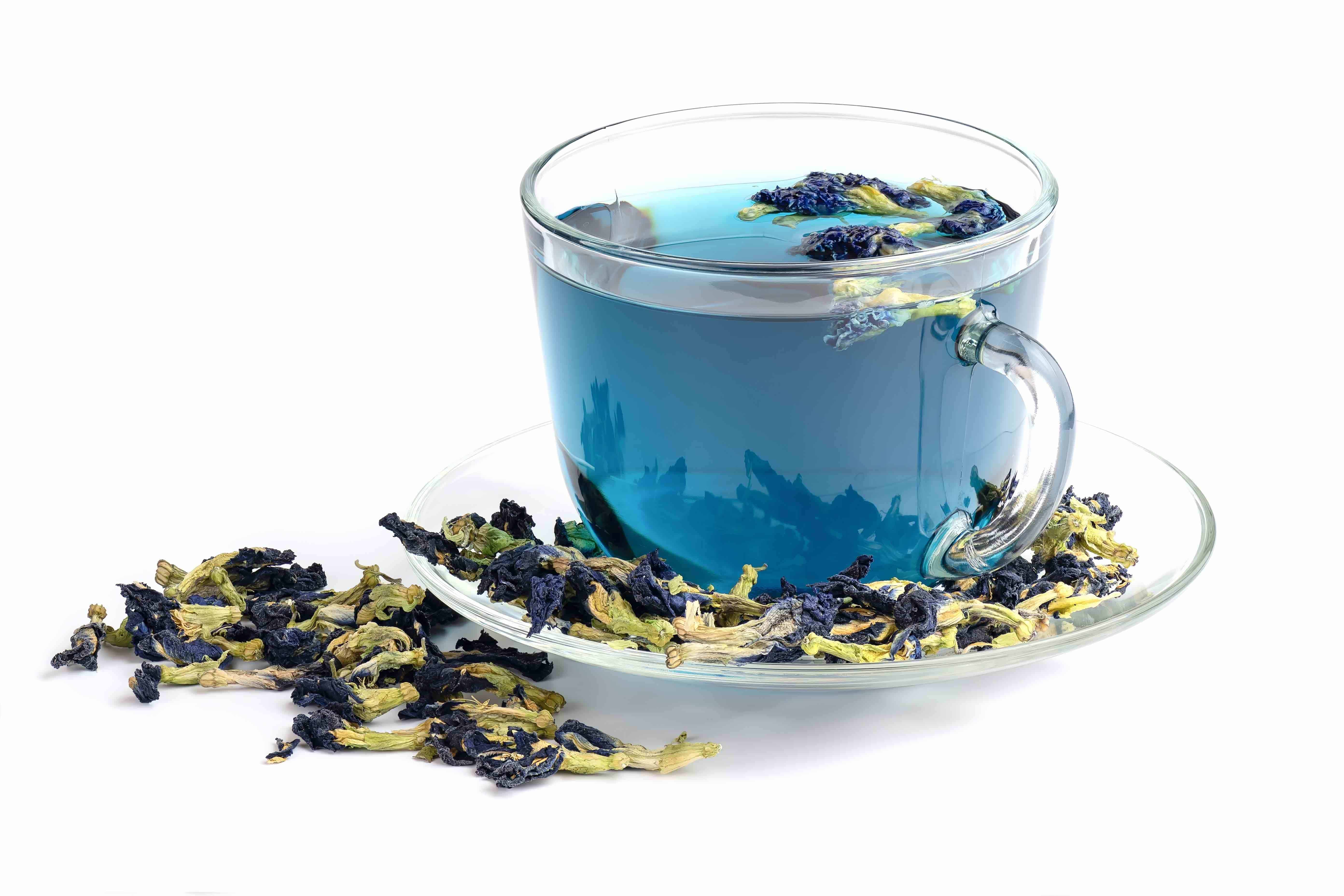
You might know this herbal tea by its other name: Blue Tea. Blue tea is an example of the types of teas that are caffeine-free. It comes from the flower of the blue-pea plant. As you might have already guessed, the tea’s brew produces a deep blue color.
Some say it tastes like green tea. It is common to add lemon juice or honey to their cups, making their drink turn purple.
10. Chai Tea
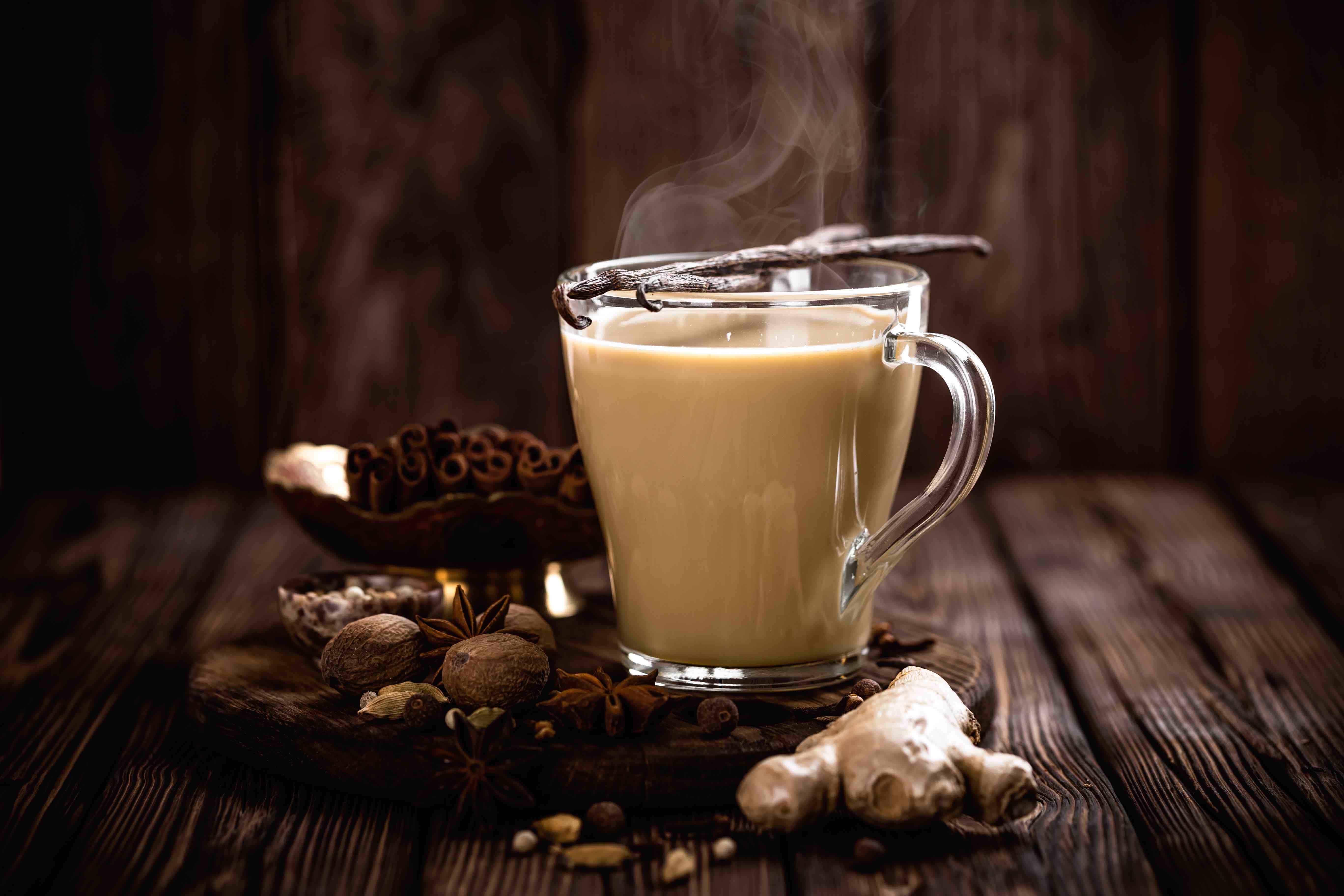
“Chai” actually means “tea” in Hindi. This comes from the Chinese word for tea, which is “cha.” Chai tea is a popular tea blend that comes from black tea. Tea makers mix spices like cinnamon, cardamom, and ginger with sugar or honey. Like other types of tea, blends of chai tea vary, so some can taste spicy while some are milky and sweet.
11. Chaga Tea

Chaga tea is one of the types of tea popular in Siberia. This drink comes from Chaga mushrooms. You can find Chaga mushrooms growing on birch trees in Siberia, Russia, Korea, Northern Canada, and Alaska.
Chaga tea is popular in traditional medicine. It is high in fiber and antioxidants, making it very healthy. Plus, it is also low in calories. This makes it ideal for those who are watching their weight.
12. Chamomile Tea
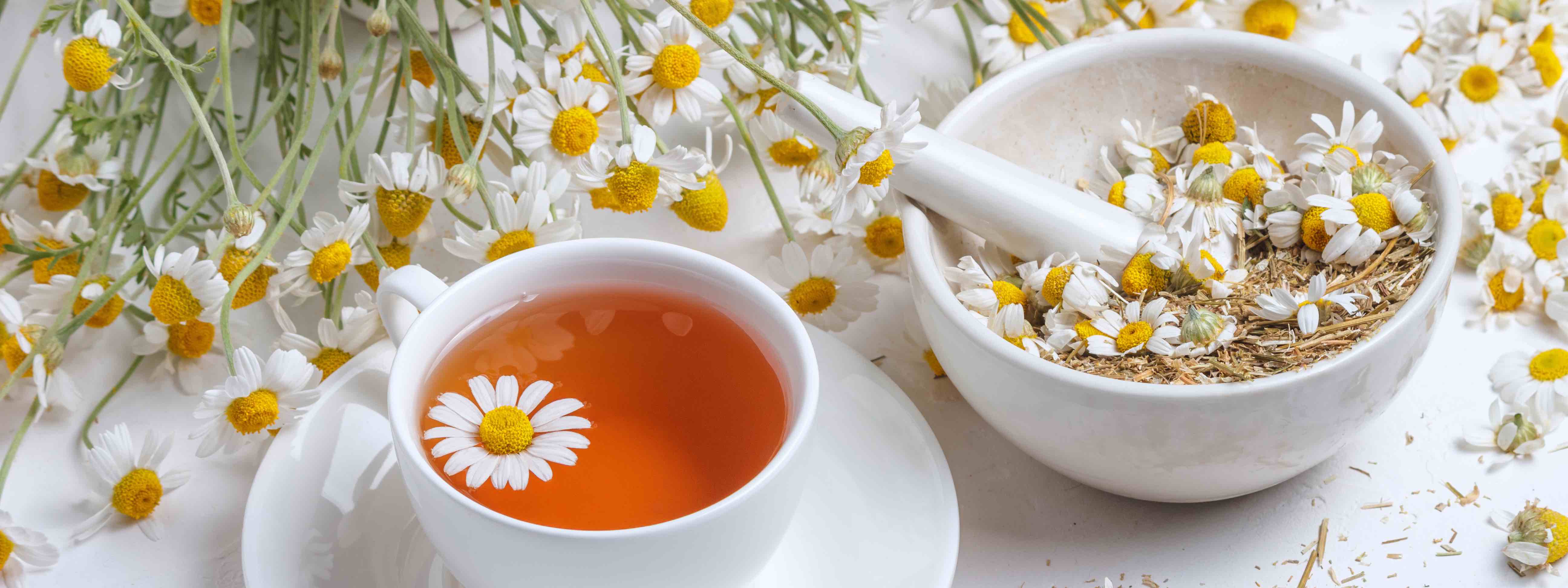
This type of tea comes from dried flowers of the chamomile plant. Sometimes, you’ll find chamomile tea served with flowers floating on the drink. Depending on how you brew it, the color can range from a light yellow to a darker copper.
Many believe chamomile tea to have calming effects. They say it helps relieve anxiety and stress. Thus, it is a popular drink before going to bed. Another interesting fact about chamomile tea is that scientists discovered it could help soothe menstrual cramps.
13. Chrysanthemum Tea
There are many types of tea from Southeast Asia. One of them is chrysanthemum tea. To brew this herbal tea, you need to steep dried chrysanthemum flowers in boiling water. You can also add in your preferred sugar to make your brew sweeter. Chrysanthemum teas can be bright yellow or reddish.
Many believe that chrysanthemum tea helps reduce inflammation. If your skin is breaking out, then you can try out this herbal tea.
14. Dandelion Tea
There are types of tea that use different parts of a plant. Dandelion tea is an example. Some use a dandelion’s root, stem, or flower to make dandelion tea. Usually, people use the roots by roasting them. This brews a yellow color similar to chamomile tea.
Like other types of herbal tea, dandelion tea has plenty of health benefits. This includes improving your appetite and soothing digestive problems.
15. Essiac Tea
Unlike other types of tea, Essiac tea doesn’t come from just one type of plant. Essiac tea comes from a mix of burdock root, slippery elm, sheep sorrel, and Indian rhubarb. You’ll find most essiac teas in powder form.
Some claim that it is a natural treatment for cancer. Nurse Rene Caisse started this notion when she opened a cancer clinic in Ontario, Canada. There, she used essiac tea to help her patients. This happened in 1922. Today, there are still no studies that actually confirm its effectiveness.
16. Ginger Tea
As the name suggests, ginger tea comes from brewing ginger root. Ginger tea is a popular herbal medicine in various parts of Asia. Because the taste can come off strong, tea makers often add milk, orange slices, or lemon.
Aside from common health benefits, ginger tea helps calm motion sickness. If you feel dizzy or nauseous, then try drinking a cup of ginger tea!
17. Hibiscus Tea

Hibiscus tea comes from the flower of the hibiscus plant. This type of tea brews a crimson color, and it tastes like cranberries. You can serve the hibiscus tea either hot or cold. Africa, Mexico, Thailand, and Italy have their own version of hibiscus tea.
Like most types of tea, hibiscus tea is rich in antioxidants. This helps prevent cell damage. Aside from this, hibiscus tea also lowers blood fat levels.
18. Jasmine Tea
To make jasmine tea, you will need to mix a type of tea with the jasmine plant. Most people use green tea as the base. Infused with jasmine blossoms, the resulting cup of tea is sweet with a flowery smell.
In Chinese culture, hosts will serve jasmine tea to welcome their guests. Thus, they’ll often have a stock of jasmine tea in their kitchens ready to brew.
19. Kava Tea
This type of tea comes from the Kava, or “Kava kava,” plant native to the South Pacific. Unlike most types of teas, a cup of kava tea doesn’t look as appetizing. Ground kava root infused in hot water produces a dark murky drink. Kava tea’s taste can be too bitter for some, especially in its concentrated form. To make it easier to digest, tea makers often add cinnamon and other sweeteners.
The health benefits of kava tea can be controversial. Some believe in its health benefits of soothing anxiety and stress. However, others claim it can cause liver damage.
20. Kombucha

Did you know that another name for kombucha tea is “mushroom tea”?
To make kombucha tea, tea makers add types of bacteria, yeast, and sugar to a tea base. This tea base is usually black tea or green tea. Then, they set this aside to let it ferment for a few weeks. While it ferments, a mushroom-like film forms on the surface of the liquid, hence the name.
Drinking kombucha tea gives your body “healthy bacteria.” Kombucha tea is a popular homebrew. Just make sure you’re doing the process properly!
21. Kudzu Tea
Both Eastern and Western traditional medicine use kudzu root to cure many health problems. This same root is the primary ingredient of kudzu tea. Ground kudzu root or kudzu flour brewed in hot water produces a slightly thicker texture.
Kudzu tea has many names. This includes “gegen-cha” in Chinese, “kuzuyu” in Japanese, and “galbun-cha” in Korean. In English, it is kudzu tea or “arrowroot tea.”
22. Lemongrass Tea
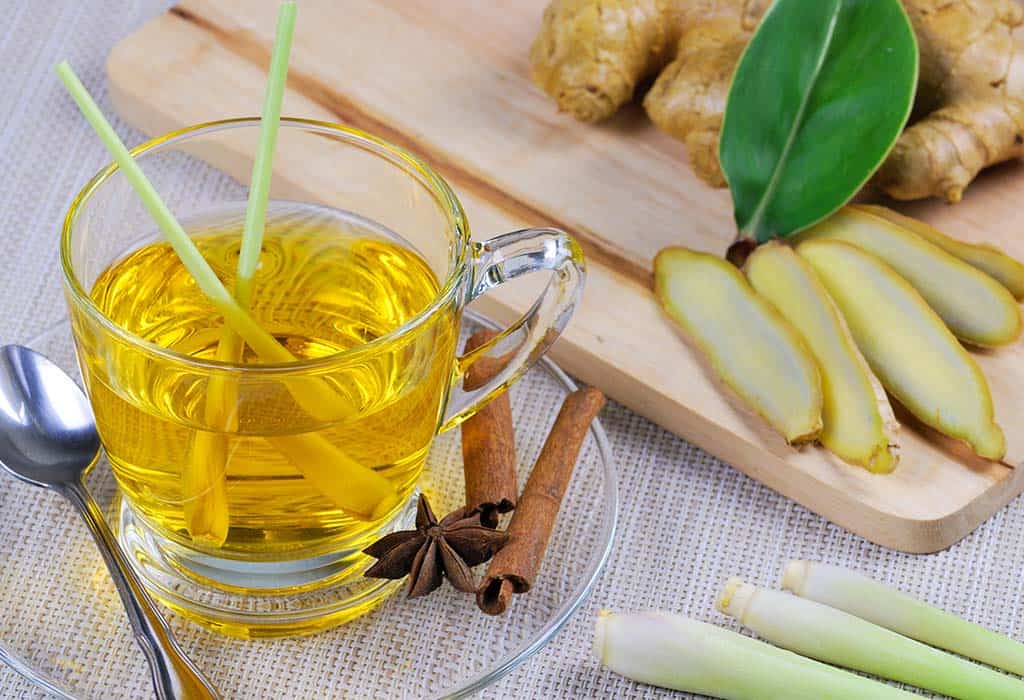
Lemongrass, or citronella, is a plant native to Sri Lanka and South India. When used to make tea, it produces a fresh lemon smell and taste. Despite the citrus taste, it isn’t acidic. Some variations of lemongrass tea include using green tea or adding ginger root.
Like other types of tea, lemongrass tea is known to relieve anxiety and stress. Another health benefit of lemongrass tea is that it improves oral health.
23. Mint Tea
The taste of mint tea depends on the types of tea leaves you use. Some use fresh mint or chocolate mint. Others also mix different types of mint in a single brew for a special taste. Often, people use honey as a sweetener for mint tea.
This herbal tea is popular in Morocco. In their culture, they often serve this to house guests as a show of hospitality.
24. Moringa Tea

There are many names for the moringa plant. Its scientific name is Moringa oleifera. “Drumstick tree” comes from its shape. “Miracle tree” comes from its many medicinal uses. “Horseradish tree” comes from the strong taste of its roots. For moringa tea, tea makers dry moringa leaves and brew them in hot water.
Many drink moringa tea for improved heart health. It lowers cholesterol levels. Some also claim it improves brain health.
25. Nettle Tea
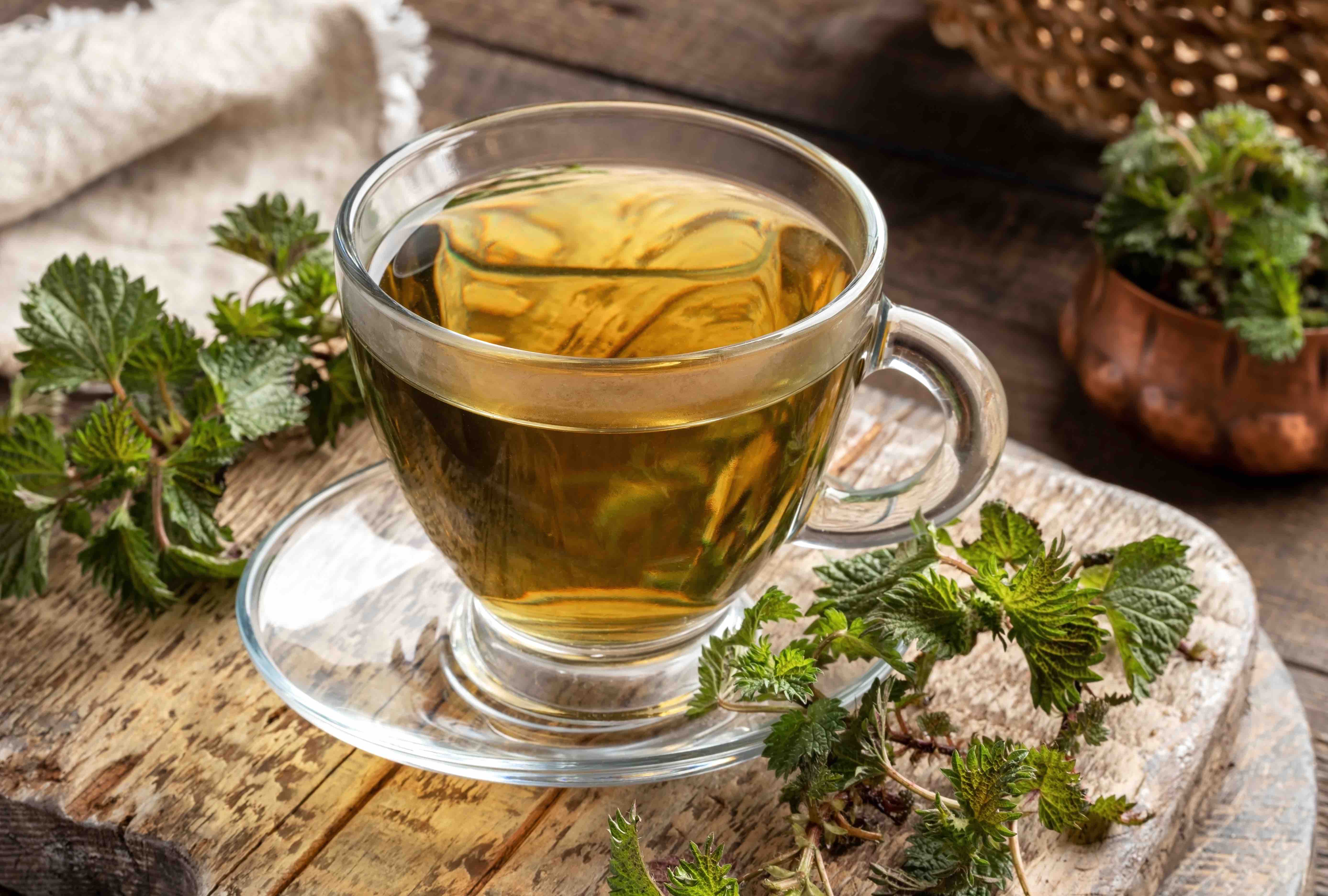
Out of all the types of tea, some believe nettle tea is the best for overall health and wellness. In Ancient Greece and Rome, they used nettle for all kinds of diseases, including indigestion. Nettle tea has many vitamins and antioxidants. It also contains calcium and fatty acids. These make it an incredibly healthy drink.
Some call nettle tea “stinging nettle tea,” based on its primary ingredient. Tea makers can use both the leaves and roots of the stinging nettle plant.
26. Olive Leaf Tea
In the Mediterranean, one of the most popular types of tea is olive leaf tea. They drink this herbal tea as a part of their diet. They also drink this to cure colds, malaria, and other illnesses.
Another fact about this herbal tea is that Ancient Egyptians were the ones to first discover its medicinal uses. There, they believed the olive leaf to be from a heavenly power.
27. Pau d’arco Tea
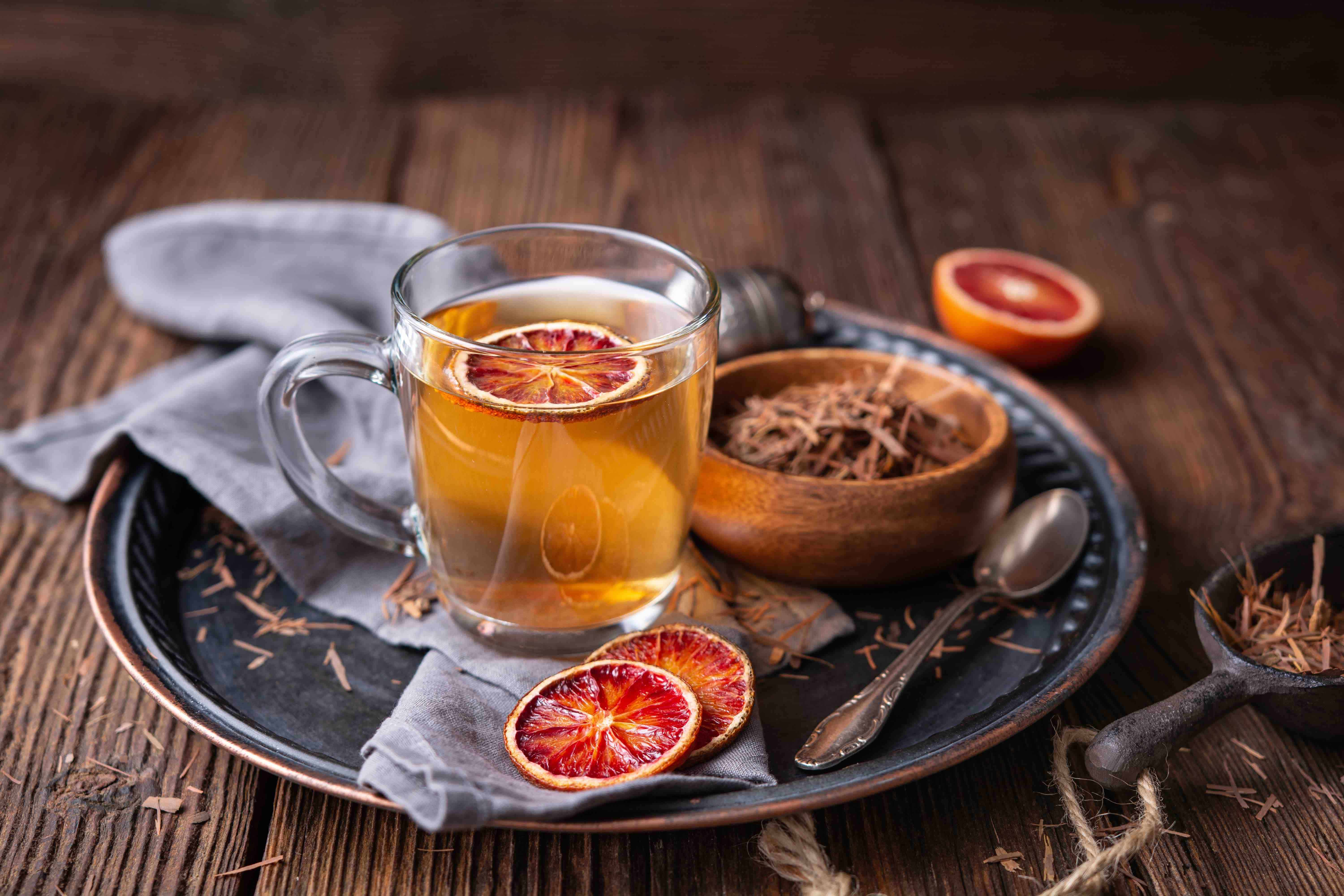
Pau d’arco, or “bow tree” in Portuguese, grows in Central and South America. The name comes from the fact that locals often use its tree bark to fashion bow weapons. Of course, that isn’t the only use for the bow tree’s bark.
Unlike most types of teas, Pau d’arco tea uses the inner bark of the tree instead of its roots or leaves. Another name for Pau d’arco tea is “lapacho.”
A health benefit of this herbal tea is treating infections in the digestive system. It also aids with weight loss.
28. Peppermint Tea
If you frequent Starbucks, you’ll notice many people order this drink. Peppermint tea is one of the more popular types of tea. People love its fresh taste and cool mouth feel. However, aside from its delicious taste, it also has many health benefits.
People believe peppermint tea can relieve headaches. It also improves digestion and lessens menstrual cramps. Of course, who can forget how it gets rid of bad breath?
29. Raspberry Leaf Tea
Raspberry is a popular fruit that people often use for dessert. However, some people might not know about the uses of raspberry leaves. For instance, tea makers often use raspberry leaves for a herbal brew. This brew produces a dark red drink often topped with dried leaves.
In traditional medicine, people serve raspberry leaf tea to pregnant women. They believe it boosts breast milk production and induces labor. However, further studies are necessary to prove these claims.
30. Rooibos Tea
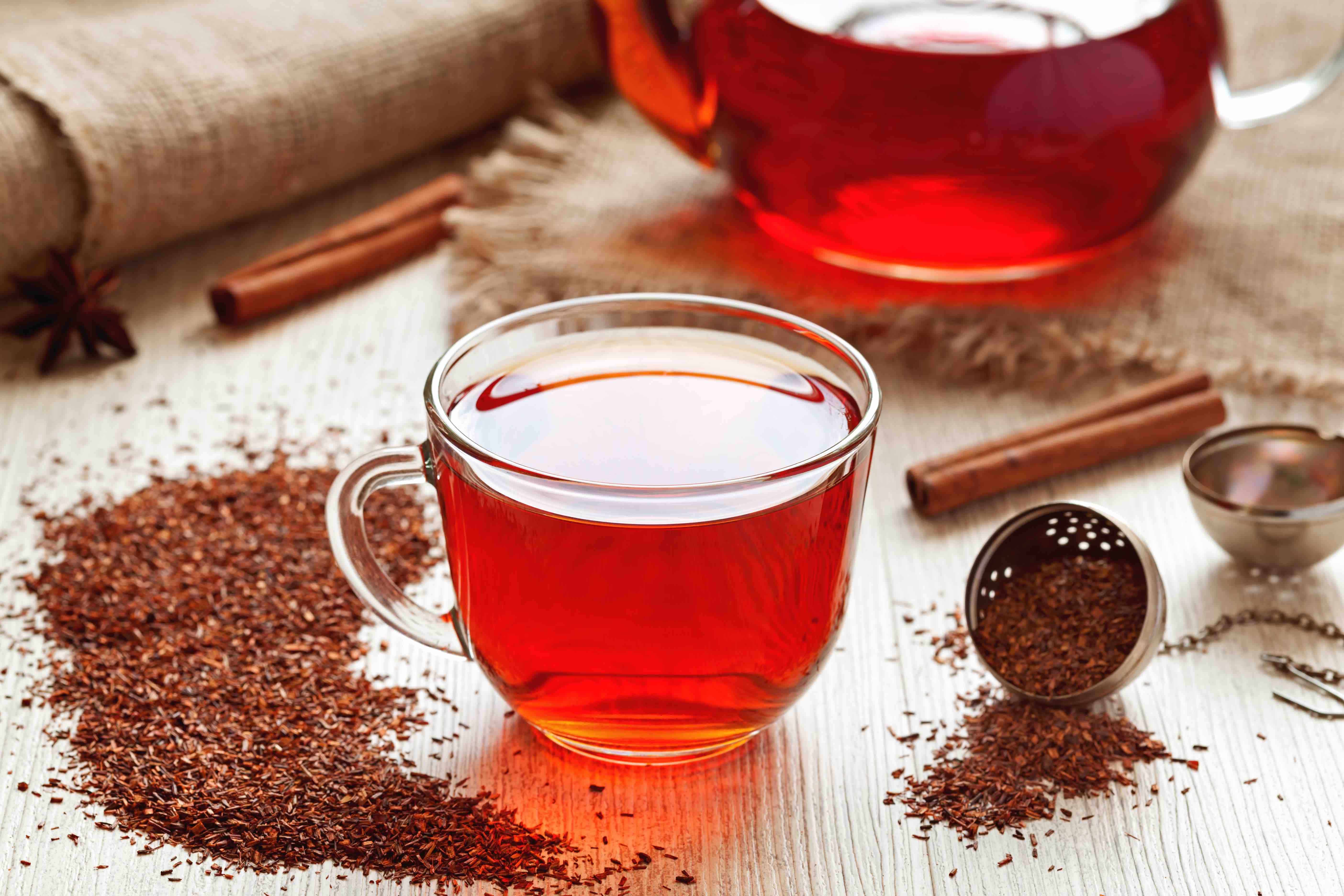
If you enjoy earthy flavors, then you’ll like rooibos tea. This type of tea was first popular in South Africa, where the rooibos plant is native. Later on, it also became a favorite internationally, especially in Great Britain.
Other names for rooibos tea include “bush tea” and “redbush tea.” If you don’t like strong tastes, try adding milk and sugar.
31. Rose Tea
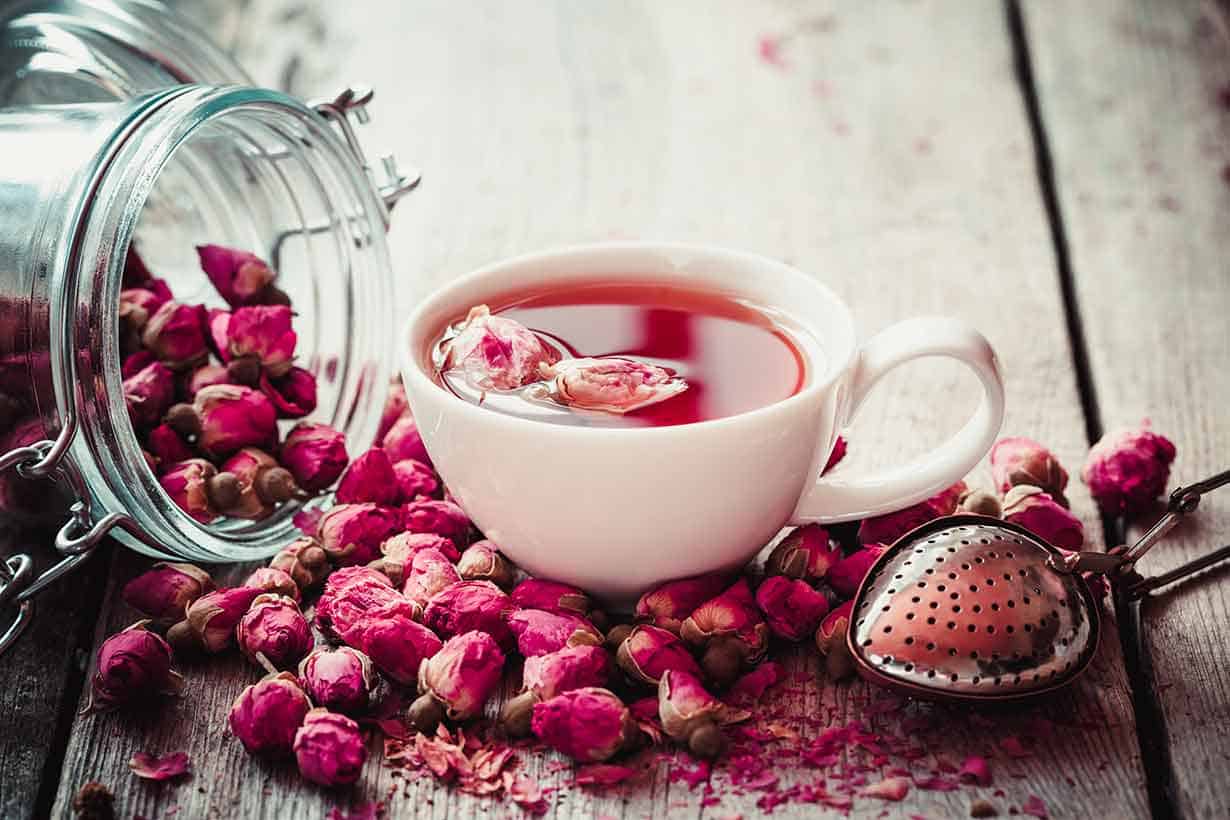
If you’re looking for some Instagram-worthy types of tea, then rose tea is the way to go. It depends on the type of rose you use, but rose tea is often a pinkish color. People often top it off with rose petals or small dried buds to add to its visual appeal.
Rose tea isn’t just pretty to look at. It is very healthy too. Rose tea helps improve mood swings. It also eases stomach problems. In China, they drink rose tea to regulate “qi” or their life energy.
32. Rosemary Tea
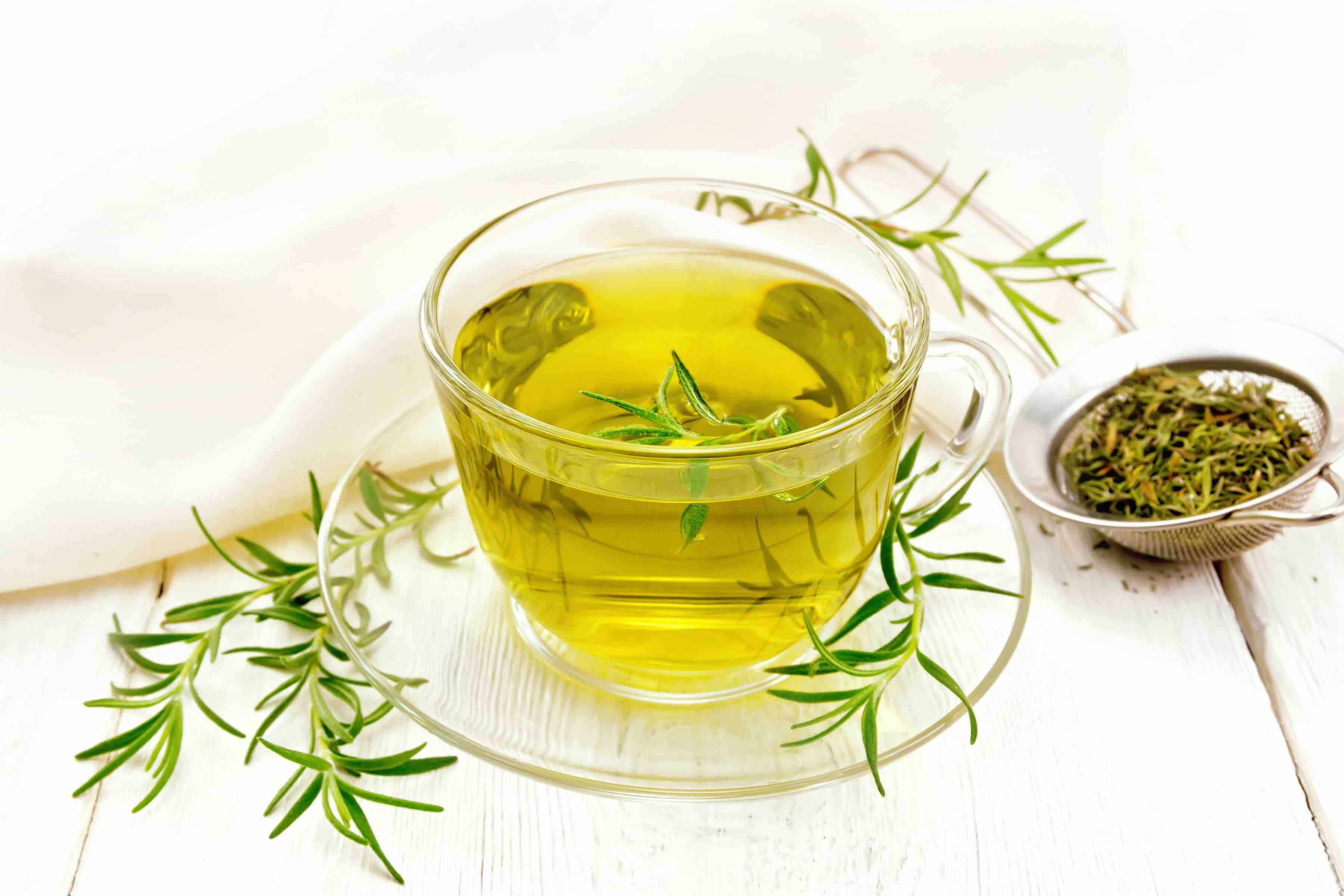
Another type of herbal tea is rosemary tea. Don’t confuse this with rose tea! These two are very different. Rosemary tea uses leaves of the rosemary bush, which is native to South America. Today, however, you can find rosemary in almost every home garden in different countries.
Because it is easy to grow your own rosemary, rosemary tea is a popular homebrew. People often mix lemon juice and honey in rosemary tea for more flavor.
33. Sage Tea
Common sage, or “garden sage,” has many uses. Chefs use it to spice up their dishes, and cosmetic industries use it in perfumes. Another use for the common sage is in making herbal tea.
Sage tea is a popular drink that brews a bright yellow color. It is one of the types of tea that is caffeine-free. Thus, you can drink it at night before going to bed!
34. Senna Tea
Unlike other types of tea, most don’t recommend drinking senna tea just because. People rarely include it in their diets because senna tea contains powerful laxatives. Thus, people often drink it to help with constipation. Some also consume it as a “detox drink.”
There are some side effects to drinking senna tea. This includes stomach cramps, diarrhea, and possibly vomiting. These aren’t severe, but it’s best to keep them in mind!
35. Spearmint Tea
If you’re looking for types of tea with a cool taste, then you can’t go wrong with spearmint tea. Spearmint tea brews a bright yellow color. Plus, it has a sweet smell. Aside from the usual health benefits, people believe spearmint tea can help with acne.
It is anti-inflammatory and antibacterial. Plus, it helps improve one’s sleep. These factors can help improve acne, but further research is still necessary. Either way, there’s no harm in trying out a cup of this herbal tea!
36. Turmeric Tea
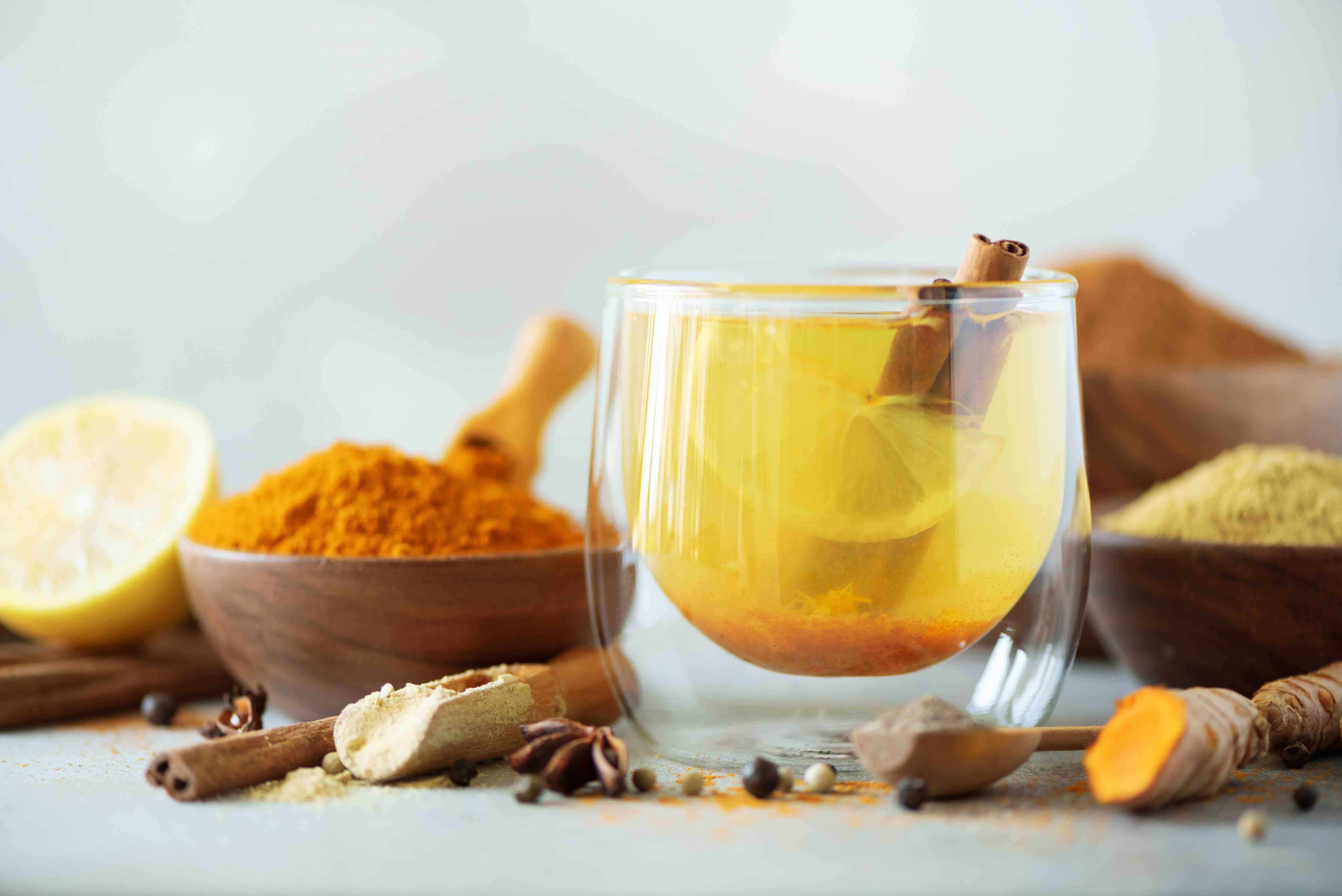
Native to Southeast Asia, Turmeric is a part of the ginger family. It is a popular spice in Asian dishes, but it is also used to make tea. Turmeric tea uses grated turmeric root. Some tea makers prefer using pure turmeric powder.
Unlike most types of tea, turmeric tea brews a thicker liquid. It depends on the concentration, but the drink is often a dark yellow.
Another fact about turmeric tea is it is anti-inflammatory. Plus, drinking turmeric tea can boost your immune system.
37. Yerba Mate Tea

This herbal tea contains caffeine. In fact, some claim it has the strength of coffee. To make yerba mate, tea makers dry and crush the leaves of a type of holly plant. In South American tradition, they serve yerba mate in a gourd with a metal straw. Sharing this drink with other people signifies a bond of friendship.
Other names for the yerba mate include “chimarrao” or “cimarron.” Some also call this herbal tea just “mate.”
Was this page helpful?
Our commitment to delivering trustworthy and engaging content is at the heart of what we do. Each fact on our site is contributed by real users like you, bringing a wealth of diverse insights and information. To ensure the highest standards of accuracy and reliability, our dedicated editors meticulously review each submission. This process guarantees that the facts we share are not only fascinating but also credible. Trust in our commitment to quality and authenticity as you explore and learn with us.
